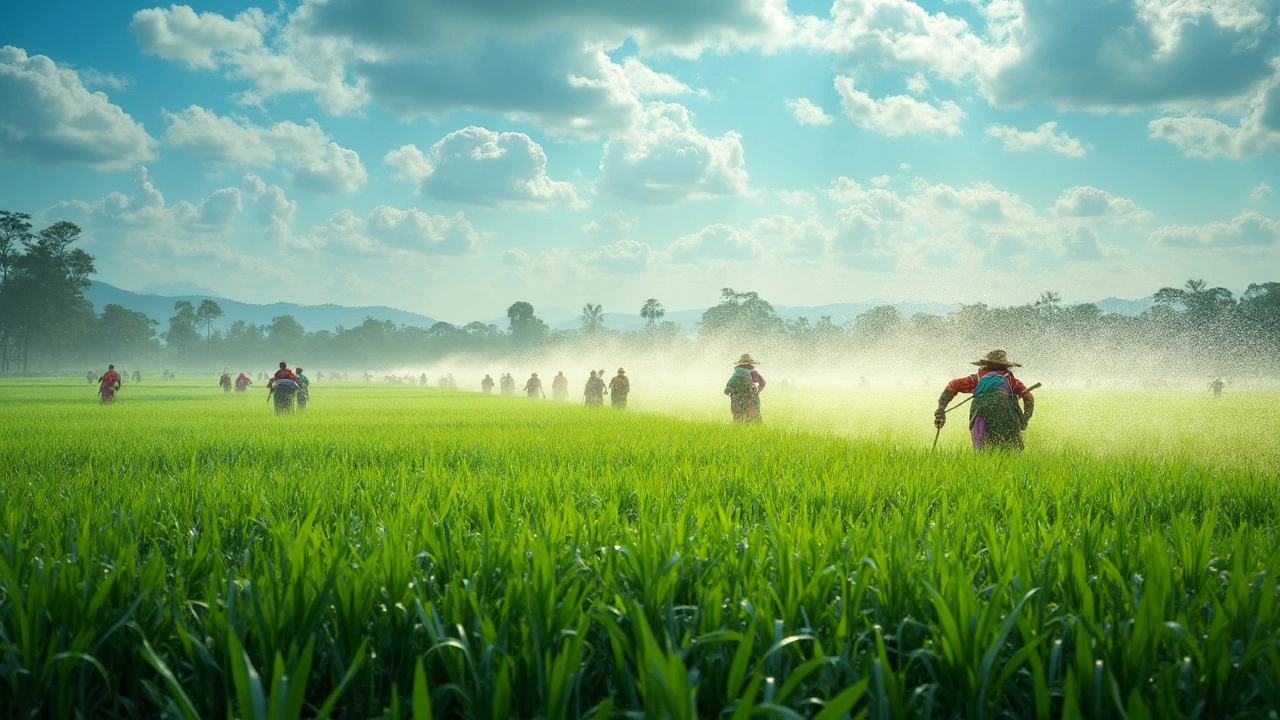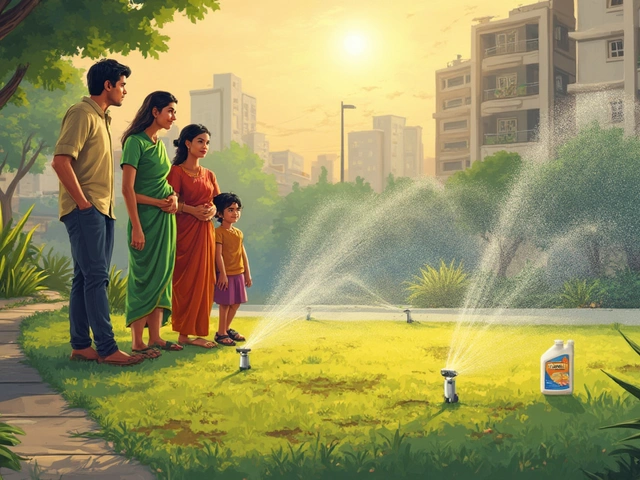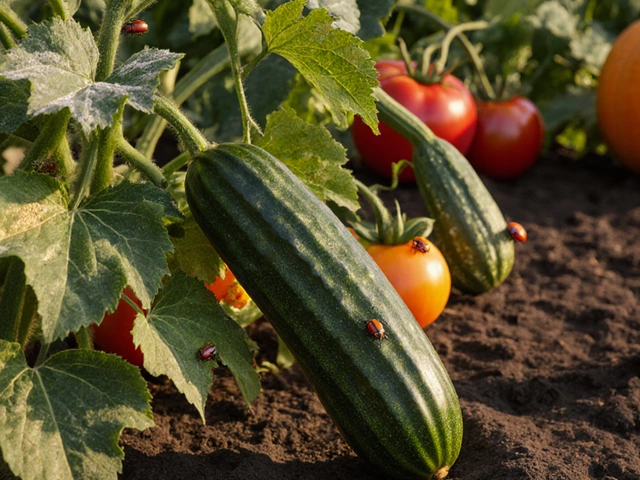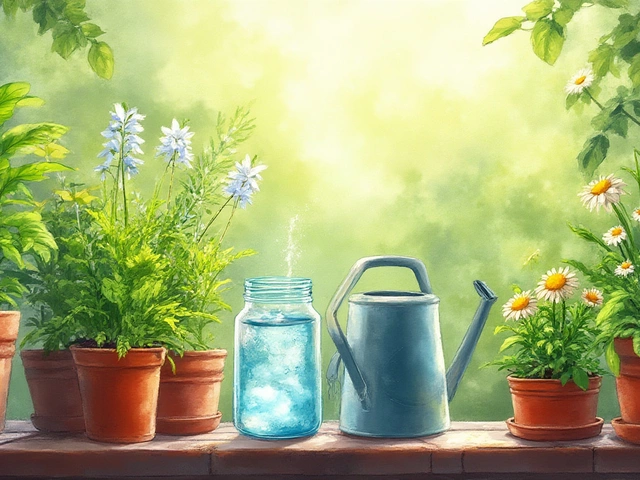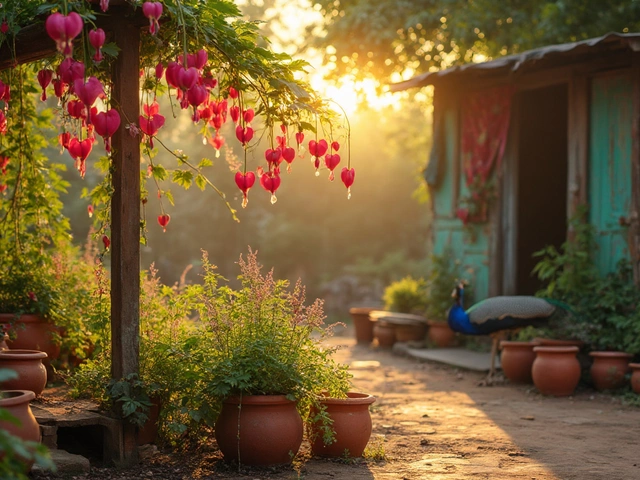When it comes to keeping plants hydrated, sprinkle and drip irrigation are two standout players. But what's the real difference between them? If you've ever had to battle with garden hoses under the scorching sun, you know how crucial finding the right watering method can be.
Sprinkle irrigation is essentially like creating artificial rain. It's great for covering large areas like fields or broad gardens since it sprays water overhead, just like a sprinkler system you'd use on your lawn. It can be simpler to install on a wide scale. But, it's worth noting it can be a bit wasteful, especially in windy conditions, as the water doesn't always hit its target.
- Overview of Sprinkle Irrigation
- Basics of Drip Irrigation
- Comparing Cost and Efficiency
- Suitability for Different Plants
- Environmental Impact and Water Conservation
Overview of Sprinkle Irrigation
Sprinkle irrigation, often seen in lawns and open fields, works by scattering water over your plants in a way that's pretty similar to natural rainfall. This method is particularly handy for large expanses of land where traditional watering would be just too much work.
How Sprinkle Irrigation Works
The system uses a series of pipes, pumps, and sprinkle irrigation heads. Water moves through the pipes under pressure, reaching the heads that rotate or remain stationary, spreading water droplets in a circular motion over the area.
Pros and Cons
- Pros: It's fantastic for covering large areas quickly. Plus, it can be automated with timers, saving you effort and ensuring regular watering without you having to lift a finger.
- Cons: The downside is water waste due to evaporation and wind drift. In conditions where water conservation is crucial, this might not be your go-to option.
Best Uses
This method shines best in ornamental gardens, sports fields, and large gardens that have a mix of plants. It's especially suited to areas where water distribution uniformity isn't a significant concern.
Challenges and Considerations
One of the main challenges is setting up the infrastructure, which might need a bit of investment upfront. Also, sprinkle irrigation systems might need intermediate cleaning and maintenance for optimal performance.
| Criteria | Sprinkle Irrigation |
|---|---|
| Water Use Efficiency | Moderate |
| Set Up Cost | Moderate to High |
| Coverage Area | Large Fields, Lawns |
So, if you're looking at watering a wide area without the bother of dragging hoses about, sprinkle irrigation might just be the thing for you—but it's key to weigh its pros and cons against your specific garden needs.
Basics of Drip Irrigation
Drip irrigation is often dubbed the 'efficient gardener's secret' because it delivers water directly to where plants need it most: their roots. Unlike sprinkling, drip irrigation focuses on precision. It's like giving each plant its own straw to sip from when it needs a drink. This method cuts down on water wastage, as it avoids spraying water all over the place—meaning there's less evaporation or runoff.
Drip systems use a network of tubing, emitters, and valves to control water release. These emitters are like tiny spigots that can be adjusted to suit different plants. For instance, thirsty tomatoes might need more water than succulents. The big win here is water efficiency—drip irrigation is said to use 30-70% less water than traditional methods like sprinklers.
Why Choose Drip Irrigation?
This system is a boon for gardeners who want to conserve water while nurturing their plants. It's especially useful in arid regions where water conservation is a must. With an appropriate setup, it can also reduce weed growth and limit the spread of plant diseases by keeping foliage dry.
Setting Up Your Drip System
If you're thinking about installing a drip irrigation system, here's a rough guide to get you started:
- Research your plants: Determine the water requirements for the kinds of plants you have.
- Plan your layout: Map out the garden and plan where the tubing and emitters should go to serve your thirsty plants efficiently.
- Install the main water line: Connect a hose or PVC pipe to your water source.
- Add emitters: Place emitters near each plant's root zone based on the plan.
- Test the system: Let the water flow and check if every plant is getting its fair share.
And remember, regular maintenance is key. Check for clogs, which can happen due to mineral buildup, and ensure that the system is adjusted for seasonal changes in plant requirements.
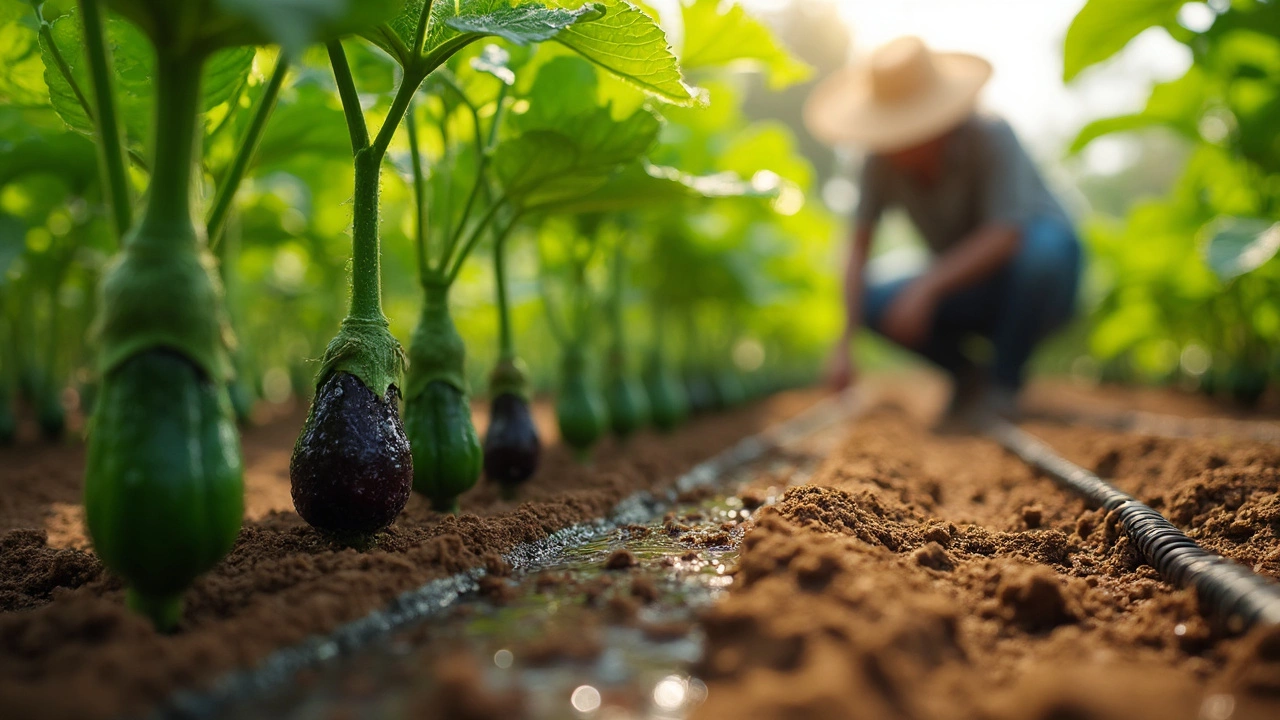
Comparing Cost and Efficiency
Choosing between sprinkle irrigation and drip irrigation isn’t just about which keeps your plants happy—it’s also about your wallet and the environment.
The Cost Factor
Sprinkle irrigation systems can be more affordable initially, especially for larger areas. They are generally straightforward to set up with fewer components involved. However, the ongoing costs might add up due to water wastage in windy or sunny conditions, where evaporation plays against you.
On the other hand, drip irrigation systems usually require a bit more investment upfront. They involve a network of hoses, emitters, and sometimes intricate filtering systems. Despite this, they're often cheaper in the long run thanks to their efficiency in water usage and plant-specific watering.
Efficiency Insights
When it comes to efficiency, drip irrigation outshines its counterpart by a mile. This method delivers water directly to the plants’ roots, ensuring minimal waste. It's perfect for conserving water and is generally more suited for smaller gardens or plants that require specific watering needs.
Sprinkle irrigation, while less efficient in water usage, can cover larger spaces more quickly, making it suitable for lawns and big fields despite higher water consumption.
Real World Numbers
| System Type | Initial Cost | Water Efficiency |
|---|---|---|
| Sprinkle Irrigation | Lower | Moderate |
| Drip Irrigation | Higher | High |
As you can see, the choice often boils down to matching your priorities with the features each system offers. Want to save water and money in the long run? Go with a drip irrigation system. Need to tackle large-scale watering quickly? Sprinkle irrigation might be your game.
Suitability for Different Plants
Choosing between sprinkle irrigation and drip irrigation often boils down to the types of plants you're nurturing. Each method has its own perks for various flora.
Delights of Sprinkle Irrigation
Sprinkle irrigation works wonders for lawns and larger plant types like corn, wheat, or any crops that benefit from overhead watering. It covers broad areas evenly, making it a great choice when your garden includes taller plants or those that don't mind water on their leaves. If you're growing leafy greens or beans, this might just be your go-to option.
Precise Drip Irrigation
On the flip side, drip irrigation is ideal for vegetable gardens or fruit orchards where water conservation is key. This method drips water directly to the plant roots, which is perfect for plants like tomatoes, strawberries, or any crop that prefers dry foliage to avoid diseases. Drip systems are particularly beneficial for drought-sensitive plants or areas where water is scarce.
Blending Both Worlds
Sometimes, a hybrid approach can be wise. Gardens hosting both tall crops and delicate shrubs might benefit from a combination of both systems. For instance, you could use sprinkle for hardier plants in one section and drip for more delicate ones in another.
Let this guide you to consider what your plants need most. Whether maximizing water efficiency or ensuring the health of the leaves in the wet or dry climates, choosing wisely can make all the difference for your garden's flourishing success!
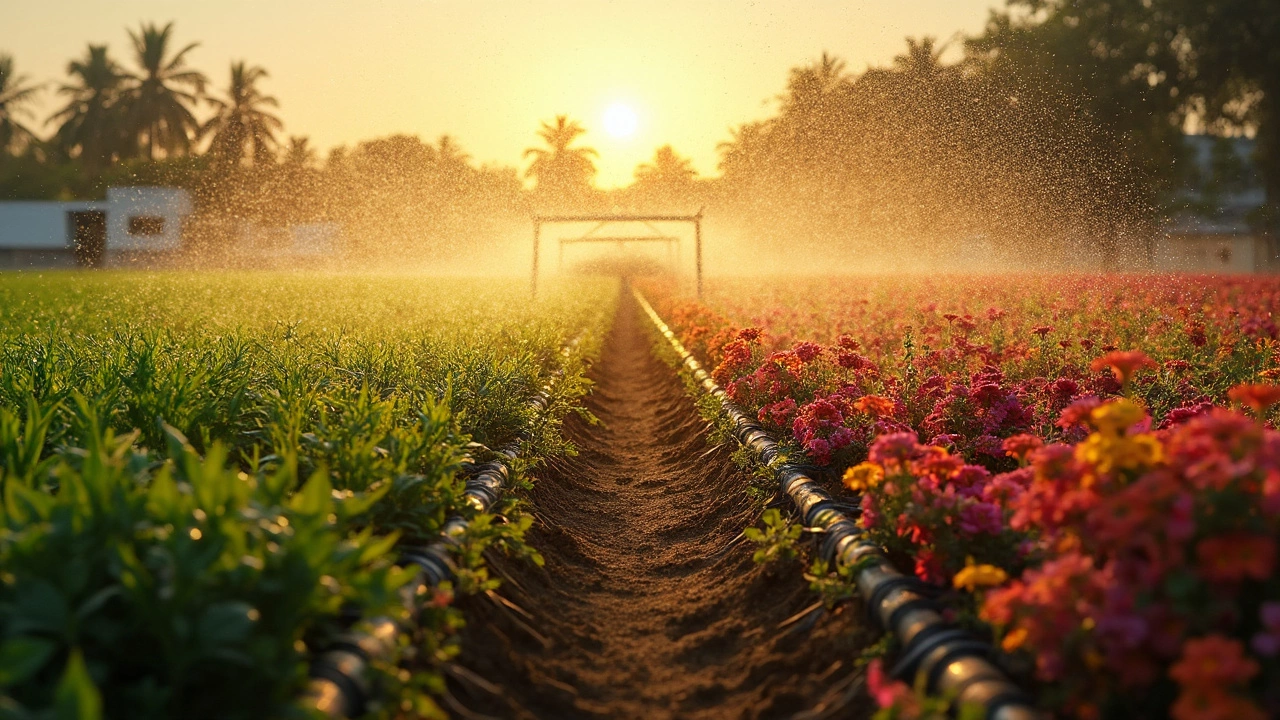
Environmental Impact and Water Conservation
When it comes to sprinkle irrigation and drip irrigation, their environmental footprints vary quite a bit. Sprinkle systems can waste water through evaporation and runoff, which is not great when you're trying to save resources and reduce your bills. Luckily, there's a more eco-friendly option.
Drip irrigation is the champion of water conservation. It delivers water right to the plant's roots, cutting down on waste. Installing a drip system can use up to 50% less water compared to sprinklers. That's a game-changer, especially in places where water's a precious resource. Scientists have noted that gardens with drip systems are healthier and produce more during droughts compared to those relying on overhead watering.
Why Choose Drip for the Environment?
If your goal is to help the planet, switching to a drip system is a no-brainer. It minimizes runoff that could wash away fertilizers and pollutants into local water sources. Plus, fewer weeds grow since water is only delivered to plants, not the surrounding soil.
Crunching Some Numbers
Let’s talk numbers. A standard lawn sprinkler might use around 1,020 gallons in an hour for a mid-size lawn. In contrast, a drip system for a similar area can slash that number significantly by delivering water more precisely.
| Irrigation Method | Water Usage (gallons/hour) |
|---|---|
| Sprinkle | 1020 |
| Drip | 450 |
The numbers are clear. Choosing a drip irrigation system not only conserves water but also keeps your garden lush with less impact on the environment. Plus, you'll feel good about not wasting water every time you step into your garden.
